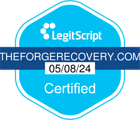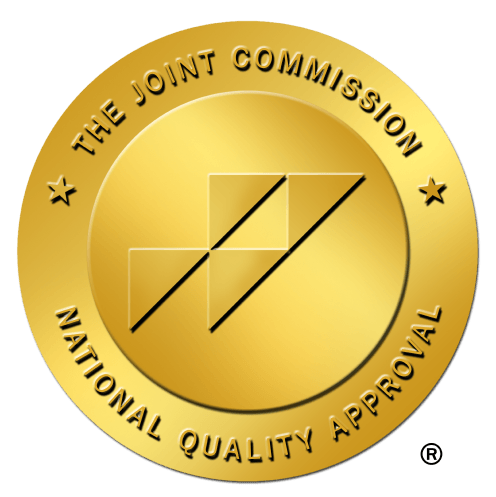Xylazine Withdrawal


Struggling with xylazine withdrawal? Learn about the symptoms, withdrawal timeline, and how professional treatment at The Forge Recovery Center can help you safely recover.
Xylazine, a veterinary tranquilizer not approved for human use, has become an alarming presence in the street drug supply. It is often mixed with fentanyl or other opioids. Sometimes referred to as “tranq,” this substance deepens sedation and dangerously extends the high, but it comes with a heavy price: addiction, severe health consequences, and a grueling withdrawal process.
If you or someone you care about is experiencing withdrawal from xylazine, know this: the symptoms are real, the risks are serious, and help is available. At The Forge Recovery Center, we specialize in treating complex substance dependencies, including polysubstance use involving xylazine. Our team understands the urgency of xylazine-related withdrawal and offers a safe, supportive path toward stabilization and recovery.
Understanding the Effects of Xylazine (Tranq)
Xylazine is a non-opioid sedative, muscle relaxant, and analgesic used by veterinarians to tranquilize large animals like horses and cattle.
It is not approved for human use and has no medical indication for human treatment. Yet despite its intended use, xylazine has entered the illicit drug supply—typically as a cutting agent in fentanyl, heroin, or other opioids.
Originally developed in the 1960s for veterinary use, xylazine belongs to a class of drugs known as alpha-2 adrenergic agonists. In animals, it works by depressing the central nervous system, causing deep sedation, slowed breathing, and lowered heart rate.
In humans, these effects can be profoundly dangerous, especially when combined with opioids.
When consumed, xylazine can cause:
Profound sedation or stupor
Bradycardia (slowed heart rate)
Hypotension (low blood pressure)
Respiratory depression
Blurred vision and disorientation
Severe withdrawal symptoms when stopped abruptly
Because xylazine is rarely used in isolation, it’s difficult to separate its individual effects from those of fentanyl or other substances. However, one thing is clear: xylazine is not safe for human consumption, and its rise in the drug supply has contributed to harder-to-treat overdoses, deeper addictions, and more complex withdrawal processes.
Why Is Xylazine in the Street Drug Supply?
Drug dealers mix xylazine with fentanyl and other opioids to increase the duration of the high and create a sense of heaviness or sedation. This combination, sometimes called “tranq dope,” has become common in several major U.S. cities including Los Angeles.
But xylazine’s presence adds serious complications:
It is not an opioid, so naloxone (Narcan) does not reverse its effects.
Overdose risk increases, especially when combined with opioids or benzodiazepines.
Wound development and tissue damage are uniquely severe—users often develop large, necrotic ulcers far from the injection site.
Dependence forms quickly, especially when mixed with fentanyl, leading to a dangerous cycle of compulsive use.
Xylazine has been detected in over 3,000 drug seizure cases across the U.S.—a staggering rise from previous years. In regions like the Northeast and the South, xylazine now appears in up to 25% of fentanyl samples
Are You Struggling with Mental Health or Addiction?
We Can Help. Call Us Now!
CALL: 877-839-1772
Who Is at Risk for Xylazine Use?
Xylazine's spread across the U.S. has followed a disturbing pattern—emerging first in northeastern heroin markets, then moving through the South, Midwest, and into the West. According to a 2022 DEA report, the South saw a 1,127% increase in xylazine-related deaths in just one year, while the West experienced a 750% spike.
Xylazine is most often found mixed with fentanyl to prolong or “stretch” the high. This makes it particularly common in areas with established fentanyl markets. Because the drug is cheap and unregulated, dealers use it to cut costs while maintaining perceived potency.
Injecting xylazine-laced substances can cause severe necrotic skin ulcers, sometimes leading to amputation. Users often inject repeatedly while under sedation, unaware of tissue damage. This makes injection drug users one of the highest-risk groups for long-term injury and infection
Xylazine Withdrawal Symptoms and Challenges
Withdrawing from xylazine presents unique clinical challenges. Unlike opioids, xylazine is not yet well-studied in human medicine, and no established detox protocols exist. However, growing case reports and emergency department data point to a clear picture: xylazine withdrawal can be intense, unpredictable, and often compounded by other drug dependencies.
While symptoms vary by individual, common xylazine withdrawal symptoms include:
Severe anxiety and panic attacks
Agitation, restlessness, and paranoia
Hypertension (high blood pressure)
Tachycardia (racing heart)
Tremors or involuntary muscle spasms
Insomnia and recurring intrusive thoughts
Depersonalization, emotional detachment, or dissociation
Cravings for sedatives or opioids
Many individuals withdrawing from xylazine are also dependent on fentanyl, heroin, or benzodiazepines. This polysubstance profile significantly raises the risk of medical complications during detox.
Co-occurring opioid withdrawal symptoms—such as chills, nausea, and body aches—can further intensify the experience.
A 2024 review published in Cureus emphasized the need for cardiovascular and psychiatric monitoring in xylazine withdrawal, citing high rates of hypertension, agitation, and emotional dysregulation in patients co-using fentanyl and xylazine.
Because xylazine is not reversed by naloxone and has no FDA-approved tapering medication, medically supervised detox is strongly recommended.
At The Forge Recovery Center, we address both the physical instability and the emotional toll of withdrawal, offering 24/7 care and customized support.
Are You Struggling with Mental Health or Addiction?
We Can Help. Call Us Now!
CALL: 877-839-1772
How CBT Supports Xylazine Withdrawal Recovery
Cognitive Behavioral Therapy (CBT) is an evidence-based approach used widely in addiction treatment, including for complex cases involving xylazine and opioid co-use.
At The Forge Recovery Center, CBT is a foundational part of our therapeutic framework, it is designed to help clients understand the thought patterns driving compulsive drug use and emotional distress.
What Is CBT?
Cognitive Behavioural Therapy focuses on identifying the connection between thoughts, emotions, and behaviors. It helps individuals recognize distorted thinking, “I need fent to cope” or “I can’t function without using” and replace these beliefs with healthier, more realistic alternatives.
Why CBT Works for Xylazine Withdrawal:
Addresses intrusive thoughts that often arise during withdrawal, including panic, paranoia, or hopelessness.
Builds coping strategies for managing discomfort and drug cravings without resorting to substance use.
Reinforces accountability, helping clients recognize their triggers and develop personalized relapse prevention plans.
Supports emotional regulation, especially when withdrawal symptoms include anxiety, dissociation, or insomnia.
Because xylazine withdrawal is often compounded by opioid dependence and unresolved trauma, CBT sessions at The Forge are adapted to reflect the complex nature of each person’s experience. Therapists use structured, goal-oriented techniques to help clients:
Identify negative thought patterns tied to relapse
Challenge cognitive distortions that justify harmful behaviors
Practice alternative coping responses through behavioral rehearsal
Track progress through individualized recovery plans
By shifting the internal dialogue, CBT empowers clients to make clearer choices, regain self-trust, and begin healing from the psychological damage left by chronic substance use.
Ready to Begin Healing From Xylazine and Opioids?
Xylazine dependence is serious—but recovery is possible. At The Forge Recovery Center, we specialize in treating complex addictions, including polysubstance use involving fentanyl, xylazine, and benzodiazepines.
Our holistic trauma-informed approach helps clients detox safely and rebuild their lives with purpose and clarity.
We offer a full continuum of care, including:
Medically monitored detox
Cognitive Behavioral Therapy (CBT) for thought and behavior regulation
Dialectical Behavior Therapy (DBT) for emotional resilience
Dual diagnosis treatment for co-occurring mental health conditions
Group and individual counseling tailored to your recovery goals
Family support services to help rebuild healthy connections
Xylazine withdrawal is serious—and healing starts with the right support. At The Forge Recovery Center, we offer a comprehensive, holistic path forward. That means not just managing symptoms, but treating the whole person: body, mind, and spirit.
Our approach combines medical supervision with personalized evidence-based therapies like CBT and DBT, wound care coordination, emotional counseling, and wellness support. We address the root causes of addiction and provide a personalized approach to build lasting resilience.
Trying to detox alone can be dangerous. You deserve a safe, structured, and human-centered environment to begin healing.
Contact The Forge Recovery Center for a confidential consultation and start your journey toward recovery—compassionately, professionally, and holistically.
Are You Struggling with Mental Health or Addiction?
We Can Help. Call Us Now!
CALL: 877-839-1772
Are You Struggling with Mental Health or Addiction?
We Can Help. Call Us Now!
CALL: 877-839-1772





